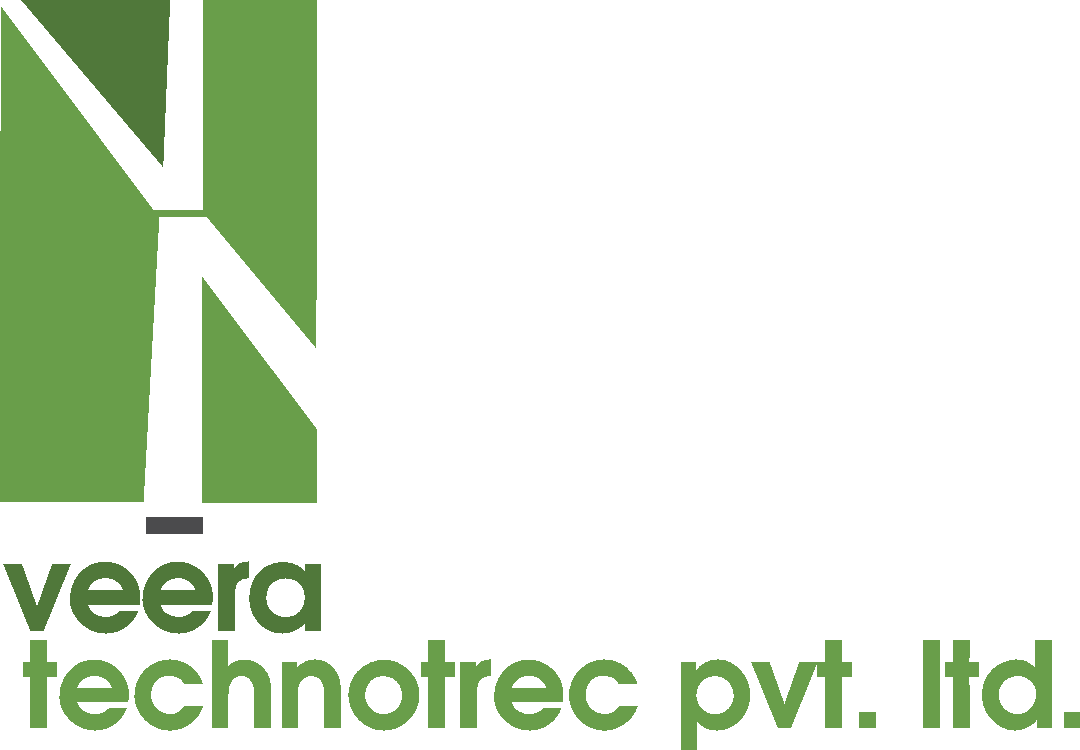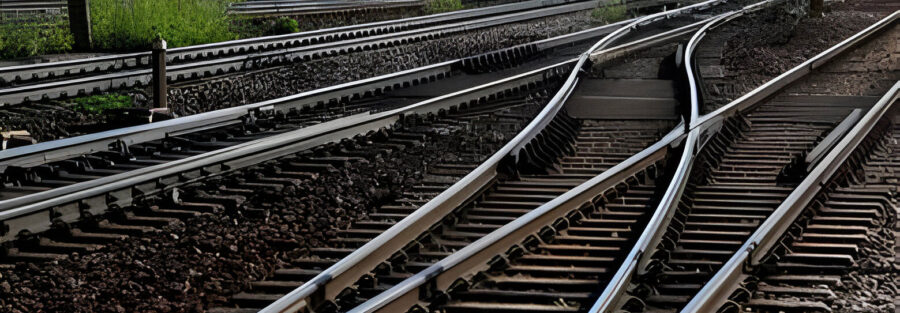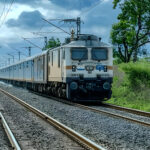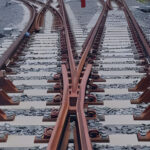Railway Turnouts, also known as switches or points, are critical components of railway infrastructure that allow trains to change tracks safely and efficiently. The railway turnout design and manufacturing involve various factors that must be carefully considered to ensure optimal performance, durability, and safety. In this comprehensive guide, we will delve deeper into the key factors involved in turnout design.
1. Railway Turnout Design Geometry
The geometry of a railway turnout plays a crucial role in determining its functionality and compatibility with the surrounding track layout. Turnouts are designed to facilitate smooth transitions between tracks while minimizing wear and tear on the track components and rolling stock. Factors such as the radius of curves, the length of turnout branches, and the angle of divergence are carefully calculated based on the operational requirements and traffic volumes of the railway network.
A well-designed turnout geometry ensures that trains can navigate through junctions and intersections without experiencing excessive lateral forces or derailments. Computer-aided design (CAD) software is often used to simulate train movements and optimize turnout geometries to meet the specific requirements of each railway project. By fine-tuning the geometry of turnouts, engineers can enhance operational efficiency, reduce maintenance costs, and improve the overall reliability of railway infrastructure.
2. Frog Design
The frog is the central component of a turnout where the rails diverge or converge. Its design is critical for ensuring seamless transitions between tracks and minimizing the risk of derailments. Frog design involves various considerations, including frog angle, clearance, flangeway dimensions, and guard rails.
The frog angle determines the divergence angle between the turnout and the main track, allowing trains to smoothly transition from one track to another without excessive wheel flange contact or wear. Clearance refers to the space between the wheel flanges and the frog rails, ensuring that trains can pass through the turnout without interference or derailment. Flangeway dimensions are carefully optimized to accommodate the wheel profiles of different rolling stock while minimizing the risk of wheel climb or derailment.
Guard rails are additional safety features installed on either side of the frog to guide the wheel flanges of passing trains and prevent them from derailing. Guard rails are designed to withstand the impact forces exerted by passing trains and provide an extra layer of protection against derailments, especially at high speeds or on curves.
3. Material Selection
The choice of materials for turnout components, including rails, frogs, switch points, and crossing panels, is crucial for ensuring durability and longevity in railway operations. High-strength steel alloys are commonly used for rail and frog components to withstand the heavy loads and dynamic forces exerted by passing trains while minimizing wear and fatigue.
Rails are typically made of heat-treated steel alloys with high tensile strength and hardness to resist wear and deformation under heavy traffic loads. Frog components, including the frog point and wing rails, are also made of hardened steel alloys to withstand the impact forces and abrasion from passing train wheels.
Switch points are critical components that experience high levels of wear and fatigue due to repeated movement and contact with passing trains. Therefore, switch points are often made of tougher steel alloys or equipped with replaceable inserts to extend their service life and reduce maintenance costs.
Crossing panels, where the rails of different tracks intersect, are subjected to high levels of stress and wear, especially in high-traffic areas. Therefore, crossing panels are typically made of durable steel alloys or concrete with reinforced steel inserts to withstand the impact forces and abrasion from passing trains.
In addition to steel alloys, other materials such as composite materials, polymers, and ceramics are also being explored for turnout components to improve performance, reduce maintenance costs, and enhance sustainability. Composite materials offer advantages such as corrosion resistance, lightweight, and low maintenance requirements, making them suitable for turnout components exposed to harsh environmental conditions or high levels of wear.
4. Operational Speed and Traffic Volume
The design of turnouts must take into account the operational speed of trains and the volume of traffic passing through the junction. Higher speeds and heavier traffic volumes require more robust turnout designs with tighter tolerances and more frequent maintenance intervals to ensure safe and reliable operation.
The design speed of turnouts refers to the maximum speed at which trains can safely pass through the turnout without experiencing excessive lateral forces or derailments. Design engineers must consider factors such as curve radii, superelevation, track cant, and track geometry to optimize turnout designs for high-speed operations.
Traffic volume refers to the number of trains passing through the junction within a given time period. Higher traffic volumes require more durable turnout components and more frequent maintenance intervals to withstand the increased wear and tear from passing trains. Design engineers must also consider factors such as train lengths, frequencies, and axle loads when designing turnouts for high-traffic areas.
5. Maintenance Considerations
Turnouts require regular inspection, lubrication, and maintenance to ensure optimal performance and extend their service life. Factors such as accessibility, ease of maintenance, and the availability of spare parts are critical considerations in turnout design to minimize downtime and reduce operational costs.
Regular inspection of turnouts involves visually inspecting the condition of rail, frog, switch point, and crossing panel components for signs of wear, fatigue, or damage. Specialized inspection tools such as track geometry cars, ultrasonic testing devices, and infrared thermography cameras may also be used to detect hidden defects or abnormalities in turnout components.
Lubrication of turnout components is essential for reducing friction, wear, and corrosion in rail joints, switch points, and frog assemblies. Lubricants such as graphite, grease, and oil are applied to critical contact points to reduce friction and prevent metal-to-metal contact, prolonging the service life of turnout components and reducing maintenance costs.
Maintenance activities such as rail grinding, weld repairs, and component replacements are performed as needed to address wear, fatigue, or damage in turnout components. Design engineers must ensure that turnouts are designed with adequate clearance and access points to facilitate maintenance activities and minimize disruptions to rail operations.
6. Safety Standards and Regulations
Railway Turnout design and manfacturing must comply with industry standards and regulatory requirements governing railway infrastructure to ensure safety and interoperability with other rail networks. Design engineers must stay updated on the latest safety standards and incorporate appropriate safety features, such as derailment protection devices and interlocking mechanisms, into their designs.
Derailment protection devices such as guard rails, check rails, and derailers are installed at critical locations along turnouts to prevent trains from inadvertently entering diverging routes or encountering obstacles on the track. Interlocking mechanisms such as mechanical, electrical, or electronic interlockings are used to ensure that turnouts are properly aligned and locked in position before trains are allowed to pass through.
Safety standards and regulations also govern the design and installation of signaling and communication systems, track circuits, and level crossings associated with turnouts. Design engineers must ensure that turnout designs comply with these standards to prevent accidents, collisions, and derailments caused by signal failures, track obstructions, or human error.
7. Environmental Considerations
Environmental factors such as temperature variations, moisture levels, and exposure to corrosive agents can affect the performance and longevity of turnout components. Design engineers must select materials and coatings that provide adequate protection against corrosion and environmental degradation to ensure the reliability and safety of railway operations.
Steel alloys used in turnout components are often coated with protective coatings such as galvanization, painting, or epoxy coatings to prevent corrosion and rust formation in harsh environmental conditions. Concrete sleepers and crossing panels may be reinforced with steel inserts or coated with waterproof membranes to prevent water ingress and deterioration over time.
In addition to material selection and coatings, design engineers must consider environmental factors such as soil composition, drainage patterns, and vegetation growth when designing turnouts for specific locations. Proper drainage and vegetation management practices can help mitigate the effects of water infiltration, soil erosion, and vegetation encroachment on turnout components, ensuring long-term reliability and safety in railway operations.
In conclusion, turnout design and manufacturing is a complex process that requires careful consideration of various factors, including geometry, frog design, material selection, operational requirements, maintenance considerations, safety standards, and environmental factors. By optimizing turnout designs to meet these requirements, railway operators can ensure safe and efficient train movements through junctions and intersections, minimizing the risk of accidents and disruptions to rail services.
Post published by Veera Techno Trec. Stay tuned for more articles exploring different aspects of railway infrastructure and component design.




